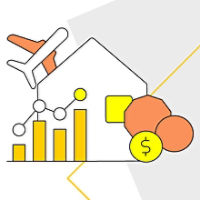Spending on Utilities fell 2.0 per cent in the month, the largest decline across all categories, with decreases seen in electricity, gas, water and council services. Transport (-0.8 per cent), Education (-0.7 per cent) and Household Services (-0.7 per cent) also declined.
“Another soft month for household spending reinforces our view that a slower than expected consumer recovery is unfolding. This trend, along with global economic uncertainty, led us to recently downgrade our Australian GDP forecast for 2025,” said CBA Senior Economist, Belinda Allen.
“While moderating inflation, February’s RBA rate cut and lower utility and petrol bills are improving purchasing power, households clearly remain deliberate with their spending choices. The recent pause of additional tariffs between the U.S. and China could improve sentiment going forward, however we expect it will take additional interest rates cuts to improve momentum in consumer spending.
“We maintain our call for the RBA to cut rates by 25 basis points next week , with a forecast end of year cash rate of 3.35 per cent.”
The annual rate of spending across home ownership status saw a surprising shift in April – renters have typically recorded the weakest spending over the past two years however this has now switched with renters leading annual growth in spending (+2.4 per cent), followed by those with a mortgage (2.2 per cent) and outright homeowners most sluggish (+0.7 per cent).
“Renters in particular have increased discretionary spending which suggests that while consumers are making cutbacks in some areas, many are still making trade-offs and allocating a share of their wallet to areas like hospitality and recreation and more so in April given the additional public holidays,” commented Ms Allen.
Queensland recorded the strongest household spending growth in April of the states and territories, rising 0.8 per cent following a rebound from ex-tropical cyclone Alfred in March, when the state posted the softest growth of all states at just 0.2 per cent.


